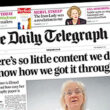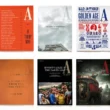Email is one of the ancient wonders of the web. In internet terms, it is practically prehistoric. But that hasn’t stopped email newsletters being one of the most talked about and exciting recent developments in the media. The Publisher Newsletter Summit – produced in London by MediaVoices, sister company of Flashes & Flames – which I had the pleasure of hosting two weeks ago, showed just how much innovation and good old-fashioned journalism is going on in the space.
The day started with a keynote from the i paper’s Georgia Chambers, whose enthusiasm for newsletters helped explained why so much exciting work is happening around email bulletins.
Chambers revealed that the popular areas for her publication are emails rounding up the day’s headlines and those focussed on money. The latter had grown to be sent out three times a week, while the former served as “a great complement to our more editorial newsletters, such as subscriber-only ones, things that are a lot more written through,” she said.
The subsequent panels and keynotes highlighted some key themes – the intimacy of being in someone’s inbox, the importance of the direct connection to the reader, and the power of an individual voice coming through in the newsletter.
The Power of Personality
One of the most interesting examples of the power of a personality-led newsletter is The Economist. The newspaper, as its editors insist on calling it, does not feature journalists’ bylines. However, its growing stable of newsletters allows readers to get to know the person behind the copy a little bit more.
Dominic Rech, senior newsletter editor at the publication, cited the example of defence editor Shashank Joshi, who writes an increasingly popular weekly newsletter that has proved essential reading for many in these war-riven times. Joshi’s colleague and fellow newsletter writer Andrew Palmer was effusive about how his Bartleby management newsletter allows him to approach topics in a more informal manner.
Alongside Rech and Palmer on “The Power of Personality’ panel was Sarah Ebner, newsletter editor at the Financial Times. Crucial to her when launching a new product is buy-in, both from the journalist doing the writing and their newsdesk bosses. The newsletter has to be seen as a key part of the job, not a side hustle or hobby.
The importance of having a writer’s character shine through was also apparent when previous winners of the Publisher Newsletter Awards – Rob Parsons, who writes Northern Agenda for Reach Plc, and Zoë Paskett, who writes the independent comedy newsletter LMAOnaise – took to the stage. Parsons shared some parts of his life with his readers, as well as having his picture in the masthead. Paskett was giving her highly personal view on performers.
Ebner had earlier pointed out how star politics writer Stephen Bush shared music and other recommendations at the bottom of his popular email. (The FT allows readers to pay for and receive this newsletter, even if they don’t buy a full subscription, a high honour indeed.)
Putting such emphasis on an individual might seem a risk for publishers. After all, people take holidays and anyone can go off and start their own Substack, likely taking ast least some readers with them. Ebner was not overly concerned though: “If you build them up, they’ll probably stay. Or you find new folks.”
Personality also matters in the creation of standalone, pop-up products. Katie Binns launched Couch to £5k, a newsletter course aiming to help readers save money. Her enthusiasm for the project shone through on stage. It’s also clear that readers engage with the course because, as an experienced and award-winning personal finance journalist, she has put her name to it.
Similar, when in January this year, The Scotsman launched its newsletter series Scottish Golf Courses You Must Play, much of the appeal of the £9.99, 12-part series was based on the fact it was compiled by legendary golf writer Martin Dempster. Neil Macdonald, head of newsletters at parent UK regional news company National World, said there were three key factors to consider when deciding whether to launch such a product: “It had to fit one of our brands, there had to be an audience for it and we must have the resources and the skills to produce it.”
Tick, tick, tick.
Macdonald added that it was important for such a product to be “evergreen”, so that it didn’t require regular updating.
Reaching for Substack
While Substack has become the Google of newsletters, there was relatively little talk of it at the Publisher Newsletter Summit, largely because most publishers use different platforms. However, Reach (which publishes the UK’s Mirror, Express and Star as well as a host of local news brands), has launched a variety of newsletters on Substack itself.
The aim is to use its social network-like features to maximise readership. Jenna Thompson, audience and content director for Reach, said that the focus was “very much about keeping people in that space, in the inbox and on Substack” as opposed to generating clicks through to company-owned websites. Whether they can use the standard Substack design and not diminish their own brands remains to be seen. It’s worth noting that the latest batch of Reach Substacks are free, with the company having experimented with paid newsletters two years ago. Perhaps this latest move is, ultimately, about accepting the diminishing power of SEO and Google and, instead, meeting the audience where they are.
It was clear from the energy at the Publisher Newsletter Summit that, whatever platform a publisher uses, there’s a lot of innovation in newsletters and they are like to remain crucial to media companies, however old email itself may be.
- Charlotte Henry publishes The Addition, a newsletter, blog and podcast about culture, media and sport. Her second book, Streaming Wars, is published in October.




